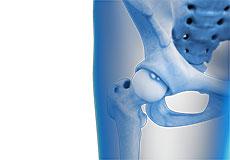
Loose bodies are small loose fragments of cartilage or bone that float around the joint. They can cause pain, swelling, locking and catching of the joint. Loose bodies occur if there is bleeding within the joint or death of tissues lining the joints, and are associated with tuberculosis, osteoarthritis, and rheumatoid arthritis. Other causes include fractures, trauma, bone and cartilage inflammation, and benign tumours of the synovial membrane.
Loose bodies are commonly found in individuals who participate in sports since they are more susceptible to fractures and other sports injuries.
Often X-ray helps in diagnosing loose bodies. However, small loose bodies which contain little fragments of bone or no bone may not be visible on an X-ray. In such cases other diagnostic tests such as CT scan or arthrography, MRI scan and ultrasound may be performed to locate the loose body. For small loose bodies your doctor may prescribe anti-inflammatory medications to relieve pain and swelling. However, any loose body that is causing the symptoms are removed.
The loose bodies are removed by arthroscopic procedure. Surgery is performed depending on the location and the size of the loose bodies.
- A suction tip is used to withdraw the loose body or is held with a small needle and grasped with a surgical instrument called as grasper.
- If loose bodies are present in the joint space, a special instrument, called mechanical burr or a resector is used to break the loose bodies. The broken pieces will be easily degraded by the body by means of a mechanism called enzyme degradation.
- Large loose bodies which are caused by fractures, inflammation of bone and cartilage (osteocartilaginous loose bodies) are reduced and fixed to the position using screws or pins.
- If the loose body is caused by benign tumour of the synovial membrane, a procedure called partial synovectomy may be done. It involves removal of part of the synovium.
- Arthrotomy is a surgical procedure that employs an open technique in which incisions are made into the joint and the loose body is removed.
Following surgery, rehabilitation program may be needed to control pain and restore function and strength to the involved joint.





